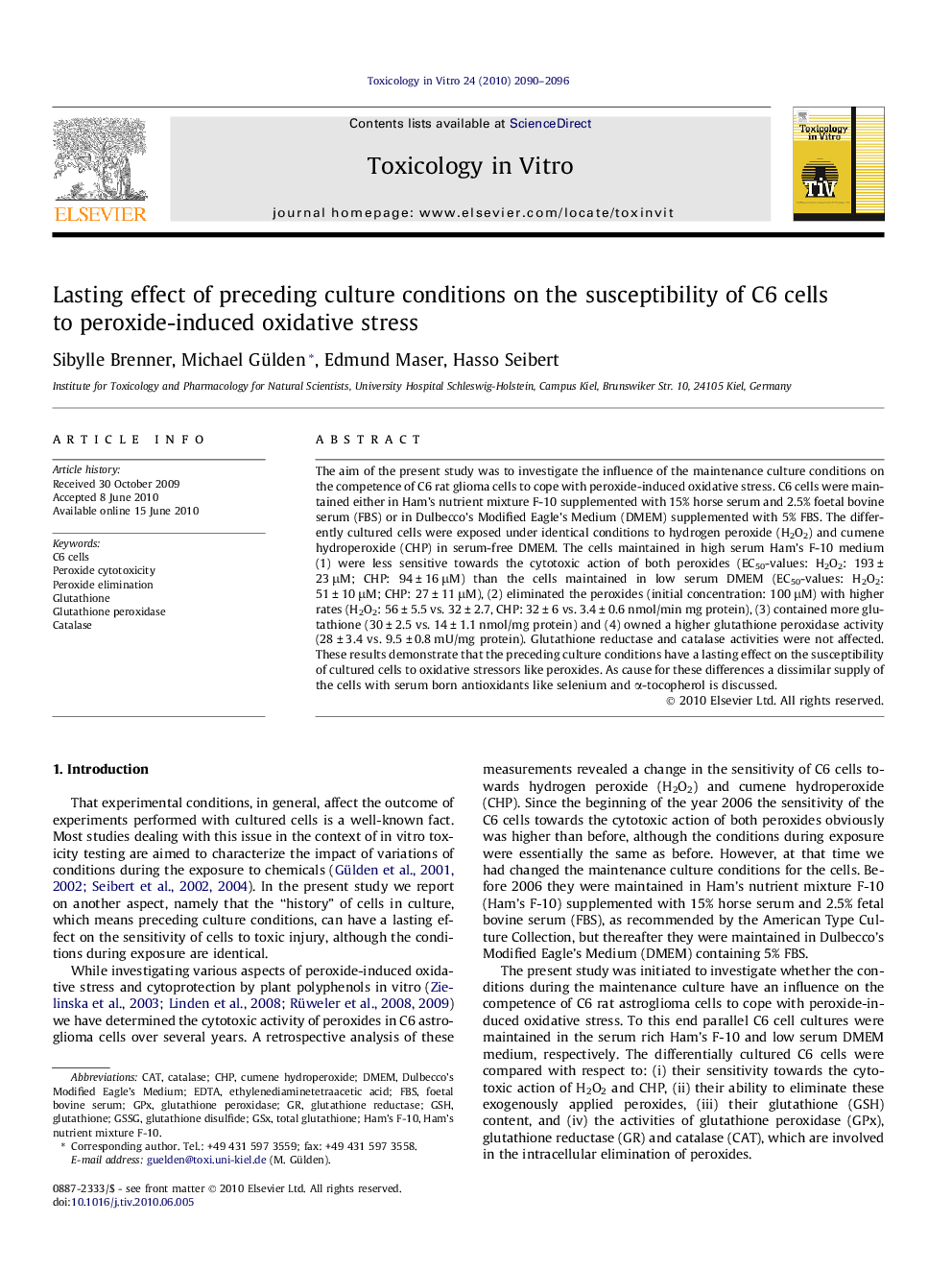| Article ID | Journal | Published Year | Pages | File Type |
|---|---|---|---|---|
| 2603076 | Toxicology in Vitro | 2010 | 7 Pages |
The aim of the present study was to investigate the influence of the maintenance culture conditions on the competence of C6 rat glioma cells to cope with peroxide-induced oxidative stress. C6 cells were maintained either in Ham’s nutrient mixture F-10 supplemented with 15% horse serum and 2.5% foetal bovine serum (FBS) or in Dulbecco’s Modified Eagle’s Medium (DMEM) supplemented with 5% FBS. The differently cultured cells were exposed under identical conditions to hydrogen peroxide (H2O2) and cumene hydroperoxide (CHP) in serum-free DMEM. The cells maintained in high serum Ham’s F-10 medium (1) were less sensitive towards the cytotoxic action of both peroxides (EC50-values: H2O2: 193 ± 23 μM; CHP: 94 ± 16 μM) than the cells maintained in low serum DMEM (EC50-values: H2O2: 51 ± 10 μM; CHP: 27 ± 11 μM), (2) eliminated the peroxides (initial concentration: 100 μM) with higher rates (H2O2: 56 ± 5.5 vs. 32 ± 2.7, CHP: 32 ± 6 vs. 3.4 ± 0.6 nmol/min mg protein), (3) contained more glutathione (30 ± 2.5 vs. 14 ± 1.1 nmol/mg protein) and (4) owned a higher glutathione peroxidase activity (28 ± 3.4 vs. 9.5 ± 0.8 mU/mg protein). Glutathione reductase and catalase activities were not affected. These results demonstrate that the preceding culture conditions have a lasting effect on the susceptibility of cultured cells to oxidative stressors like peroxides. As cause for these differences a dissimilar supply of the cells with serum born antioxidants like selenium and α-tocopherol is discussed.
